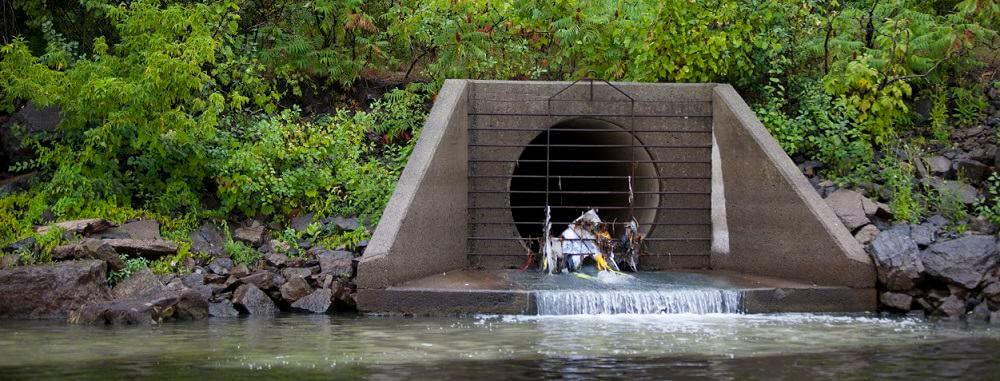Urban Stormwater

Urban runoff is a mixture of storm water, raw sewage and scoured sewage. It is transported by sewers, drainage channels and streams and discharged into receiving waters. Urban runoff has been recognized as a significant environmental detriment that has physical, chemical and biological effects on receiving waters. Human health can be affected by these discharges through contamination of drinking water sources, fish, shellfish and recreational water.
- Physical factors may include:
- Flooding, erosion, habitat washout
- Sediment discharge causing habitat destruction, impact on aquatic life, transport of contaminants, and interference with water quality processes
- Thermal energy causing loss of cold water fisheries
- Chemical factors may include:
- Biodegradable organics contributing to dissolved oxygen depletion and eutrophication
- Trace metals, chloride, pesticides and hydrocarbons
- Microbiological factors may include:
- Fecal bacteria and viruses causing contamination of shellfish
Almost 80% of Canadians live in urban areas. The process of urbanization increases runoff flows and degrades runoff quality. Urban runoff has significantly more discharge volume and solids load than municipal wastewater. Current practices of urban development are not sustainable with respect to receiving water quality.
